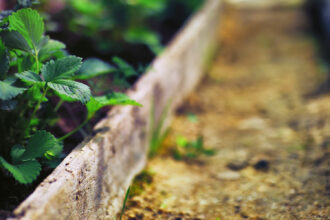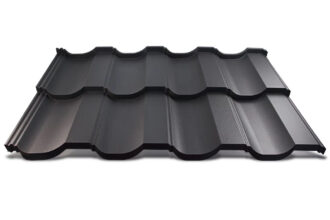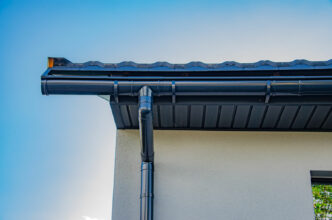An important element of every eaved roof is the eaves finish, i.e. the so-called soffit or roof soffit. Roof soffits are made of wood, sheet metal or plastics – PVC. The latter are becoming more and more popular. Let’s take a closer look at them, giving special attention to the advantages and disadvantages of PVC soffits.
PVC roof soffit – the most important information
PVC roof soffit occurs in 3 forms:
- siding soffits – they slightly resemble natural wood, except they are easier to maintain and install,
- hollow soffits – they resemble siding panels, except they are stiffer and lighter,
- full soffits – manufactured using two-layer technology – with the outer layer made of hard PVC, resistant to weather conditions, and the inner layer made of a lightweight and flexible foamed PVC.
In addition to full panels, PVC soffit systems usually also consist of perforated panels with grooves, which facilitate ventilation as well as ensure air circulation. The PVC soffit systems also include mounting strips and external corners, which are used to connect and finish the soffit. The standard length of the modules in such soffits is 4 m. PVC soffit is mounted on a wooden grate, whereas the panels are usually connected using a tongue and groove joint, and are then nailed to the grate using aluminum or galvanized screws or nails, spaced approx. every 40 cm.
Advantages of PVC roof soffits
The advantages of PVC soffits are as follows:
- PVC eaves are a universal solution – smooth panels may effectively imitate steel, whilst a soffit with wood texture bears a striking resemblance to real wood,
- PVC panels are available in a variety of colours – they can be matched to the roof structures and facade of the building in various colours,
- PVC soffits are resistant to moisture,
- PVC soffit is resistant to mechanical damage, nontoxic and incombustible,
- profiled elements of PVC soffits are light, so they do not cause difficulties during assembly,
- many PVC soffit systems also include perforated panels to ensure adequate roof ventilation,
- PVC soffit does not require maintenance, renovation or painting,
- PVC soffit is relatively cheap.
Disadvantages of PVC roof soffits
PVC roof soffits also have some disadvantages, among which are the following:
- PVC is a material that expands and contracts under the influence of temperature changes – therefore, leaving gaps between the panels should be considered when installing PVC soffits, as to let these thermal movements occur; the lack of gaps may lead to deformation and warping of the soffit over time,
- PVC soffits are not resistant to UV radiation, panels in light colours may discolour when exposed to sunlight,
- the installation of subsequent elements of the PVC soffit system generates a lot of waste, which in turn increases the cost of its implementation.


